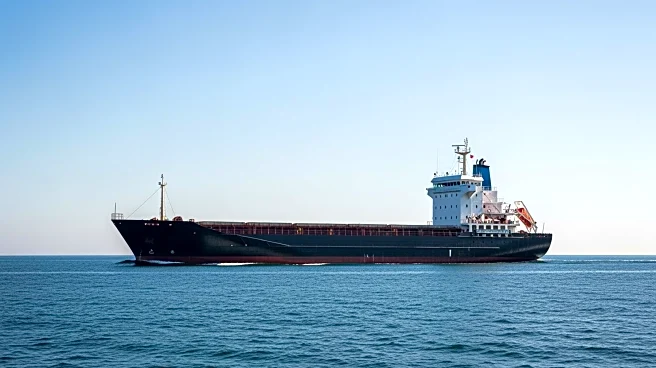What's Happening?
VesselBot's latest quarterly analysis reveals that container ship emissions remained virtually unchanged in Q3 2025 compared to the previous year, despite a 2.3% increase in voyages. The total emissions reached 50.3 million tons, with average well-to-wake
emissions intensity improving to 195.9 g CO2e/TEU km. The analysis highlights the volatility in direct China-U.S. voyages and the impact of China's retaliatory port fees on carrier strategies.
Why It's Important?
The steady emissions levels amid increased voyages indicate progress in improving the efficiency of container shipping, a critical component of global trade. The analysis underscores the importance of route-level data in understanding emissions and operational efficiency, which is vital for compliance with evolving environmental regulations. The findings may influence shipping companies' strategies and investments in greener technologies.
What's Next?
Maritime stakeholders will need to navigate complex regulatory landscapes, including the EU's Carbon Border Adjustment Mechanism and IMO's Net-Zero Framework. The demand for granular, real-time data will grow as companies seek to optimize operations and reduce compliance costs. The industry may see increased investment in technologies that enhance efficiency and reduce emissions.
Beyond the Headlines
The analysis highlights the significant performance variations between vessel sizes, ages, and routes, which can impact compliance costs and operational efficiency. The focus on emissions intensity may drive innovation in ship design and fuel technologies, contributing to the broader goal of reducing the environmental impact of maritime transport.















